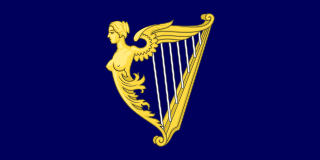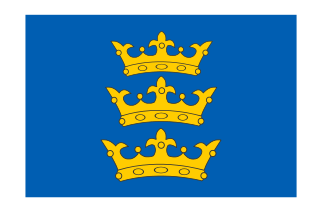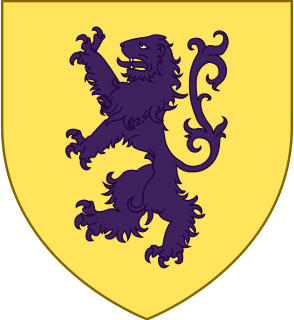| |||||
| Centuries: | |||||
|---|---|---|---|---|---|
| Decades: | |||||
| See also: | Other events of 1181 List of years in Ireland | ||||
Events from the year 1181 in Ireland.
| |||||
| Centuries: | |||||
|---|---|---|---|---|---|
| Decades: | |||||
| See also: | Other events of 1181 List of years in Ireland | ||||
Events from the year 1181 in Ireland.
John de Gray or de Grey was an English prelate who served as Bishop of Norwich, and was elected but unconfirmed Archbishop of Canterbury. He was employed in the service of Prince John even before John became king, for which he was rewarded with a number of ecclesiastical offices, culminating in his pro forma election to Norwich in 1200. De Gray continued in royal service after his elevation to the episcopate, lending the King money and undertaking diplomatic missions on his behalf. In 1205 King John attempted to further reward de Gray with a translation to the archbishopric of Canterbury, but a disputed election process led to de Gray's selection being quashed by Pope Innocent III in 1206.

The Kingdom of Ireland was a client state of England and then of Great Britain that existed from 1542 until 1800 on the island of Ireland. It was ruled by the monarchs of England and then of Great Britain in personal union with their other realms. The kingdom was administered from Dublin Castle by a viceroy appointed by the king or queen. Ireland had its own legislature, peerage, army, and state church. Although styled a kingdom, for most of its history it was a de facto dependency of England, later Great Britain; a status enshrined in Poynings' Law and the Declaratory Act of 1719.

The Lordship of Ireland, sometimes referred to retroactively as Norman Ireland, was the part of Ireland ruled by the King of England and controlled by loyal Anglo-Norman lords between 1177 and 1542. The lordship was created following the Norman invasion of Ireland in 1169–1171. It was a papal fief, granted to the Plantagenet kings of England by the Holy See, via Laudabiliter. As the lord of Ireland was also the king of England, he was represented locally by a governor, variously known as justiciar, lieutenant, or lord deputy.

The House of Stuart, originally Stewart, was a royal house of Scotland, England, Ireland and later Great Britain. The family name comes from the office of High Steward of Scotland, which had been held by the family progenitor Walter fitz Alan. The name Stewart and variations had become established as a family name by the time of his grandson Walter Stewart. The first monarch of the Stewart line was Robert II, whose male-line descendants were kings and queens in Scotland from 1371, and of England and Great Britain from 1603, until 1714. Mary, Queen of Scots, was brought up in France where she adopted the French spelling of the name Stuart.

The House of de Burgh, Burke or Bourke was an ancient Anglo-French family with the Anglo-Irish branches later adopting the surname Burke and its variants.

The history of Ireland from 1169–1536 covers the period from the arrival of the Cambro-Normans to the reign of Henry II of England, who made his son, Prince John, Lord of Ireland. After the Norman invasions of 1169 and 1171, Ireland was under an alternating level of control from Norman lords and the King of England. Previously, Ireland had seen intermittent warfare between provincial kingdoms over the position of High King. This situation was transformed by intervention in these conflicts by Norman mercenaries and later the English crown. After their successful conquest of England, the Normans turned their attention to Ireland. Ireland was made a Lordship of the King of England and much of its land was seized by Norman barons. With time, Hiberno-Norman rule shrank to a territory known as the Pale, stretching from Dublin to Dundalk. The Hiberno-Norman lords elsewhere in the country became Gaelicised and integrated in Gaelic society.
The Lord High Steward of Ireland is a hereditary Great Officer of State in the United Kingdom, sometimes known as the Hereditary Great Seneschal. The Earls of Shrewsbury have held the office since the 15th century. Although the Irish Free State, later the Republic of Ireland, became independent in 1922, the title remained the same, rather than reflecting the region of Northern Ireland, which remains within the United Kingdom.

The Treaty of Windsor (1175) was a territorial agreement made during the time of the Norman invasion of Ireland. It was signed in Windsor, Berkshire by King Henry II of England and the High King of Ireland, Rory O'Connor.

The Anglo-Norman invasion of Ireland took place during the late 12th century, when Anglo-Normans gradually conquered and acquired large swathes of land from the Irish, which the kings of England then claimed sovereignty over, as sanctioned by the Papal bull Laudabiliter. At the time, Gaelic Ireland was made up of several kingdoms, with a High King claiming lordship over most of the other kings. The Norman invasion was a watershed in Ireland's history, marking the beginning of more than 800 years of direct English and, later, British involvement in Ireland.

de Lacy is the surname of an old Norman family which originated from Lassy, Calvados. The family took part in the Norman conquest of England and the later Norman invasion of Ireland. The name is first recorded for Hugh de Lacy (1020–1085). His sons, Walter and Ilbert, left Normandy and travelled to England with William the Conqueror. The awards of land by the Conqueror to the de Lacy sons led to two distinct branches of the family: the northern branch, centred on Blackburnshire and west Yorkshire was held by Ilbert's descendants; the southern branch of Marcher Lords, centred on Herefordshire and Shropshire, was held by Walter's descendants.
Events from the year 1672 in Ireland.
Events during the year 1199 in Ireland.
Events from the year 1204 in Ireland.

Hugh de Lacy, 1st Earl of Ulster was an Anglo-Norman soldier and peer. He was a leading figure in the Norman invasion of Ireland in the 12th century, and was created Earl of Ulster in 1205 by King John of England.

Walter de Lacy was lord of Meath in Ireland. He was also a substantial land owner in Weobley, Herefordshire, in Ludlow, Shropshire, in Ewyas Lacy in the Welsh Marches, and several lands in Normandy. He was the eldest son of Hugh de Lacy, a leading Cambro-Norman baron in the Norman invasion of Ireland, and Rohese of Monmouth.
Events from the year 1350 in Ireland.
Events from the year 1337 in Ireland.
Events from the year 1216 in Ireland.
Events from the year 1484 in Ireland.
Events from the year 1527 in Ireland.